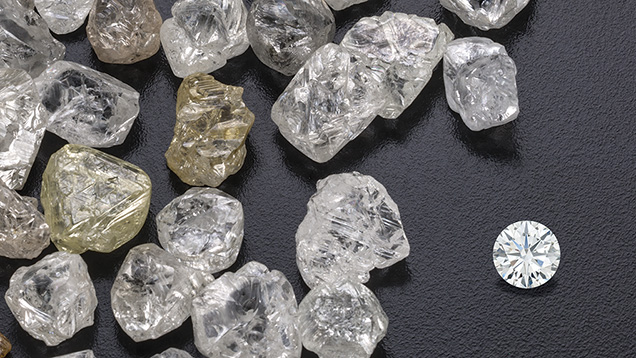
Diamond - April Birthstone
28.04.17
She who from April dates her years,
Diamonds shall wear, lest bitter tears
For vain repentance flow; this stone,
Emblem of innocence is known.
— Gregorian Birthstone Poem
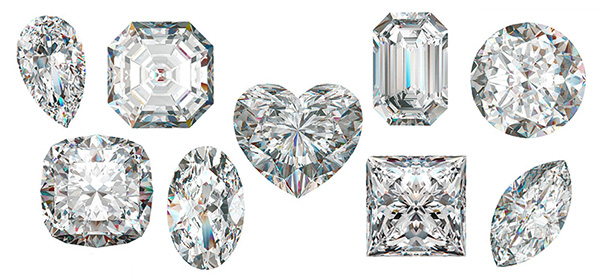
All April born are the luckiest of all, to get the most prized gemstone we know. Although diamonds do not need an introduction, as most people know or own these sparkling stones, we decided to present with some interesting and scientific facts.
Since ancient times, diamonds have been cherished objects of desire. The first and the only source of diamonds was India, and it remained a dominant producer till the 18th century. Diamonds were found in alluvial deposits, where the precious minerals were weathered out of their host rock by natural processes and were transported downstream by water. The extractions of diamonds from such deposits are very common, especially along the coasts of South Africa.
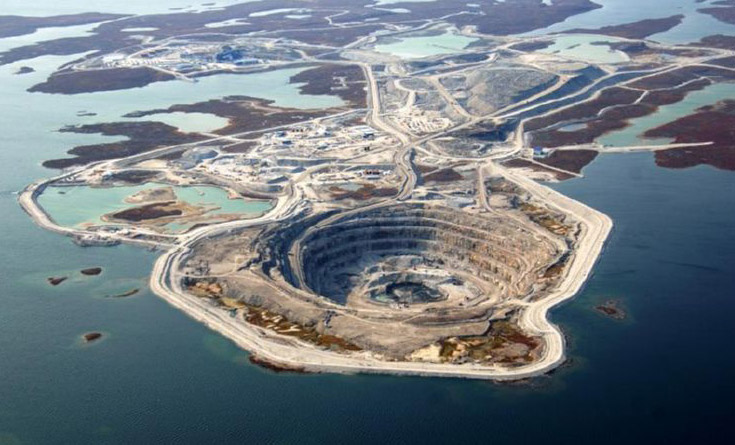
Victoria mine in Canada
Later on, it was discovered that initially diamonds form around 100 miles down in the Earth's mantle under high-pressure and high-temperature conditions, and then brought close to the Earth's surface through deep volcanic eruptions by the magma, which cools into igneous rocks known as kimberlite and lamproites. These hard stones are mined and then crushed between giant steel rollers.
The host rock is reduced to fine gravel, yet the remarkably hard diamonds come out unharmed! Water is added, and a grease covered roller sorts the diamonds from the gravel, as the stones stick to the grease. Usually, a single carat of diamond is recovered from a tonne of rich ore.

Rough Diamonds can occur in all sorts of shapes, but more predominantly as octahedrons, where two four-sided pyramids stick together at their base. The other shapes include dodecahedron with 12 faces, cube, twinned crystals known as macles and broken fragments. Diamond’s characteristic chemical composition and crystal structure make it a unique member of the mineral kingdom. It posses cubic crystal structure, and it is the only gem consisting of a single element carbon. The crystal structure of a diamond is isometric, which means the carbon atoms are bonded in the same way in all directions with strong covalent bonds. It is widely known that diamond is the hardest natural substance, having a Hardness Value of 10 on the Mohs scale of hardness.
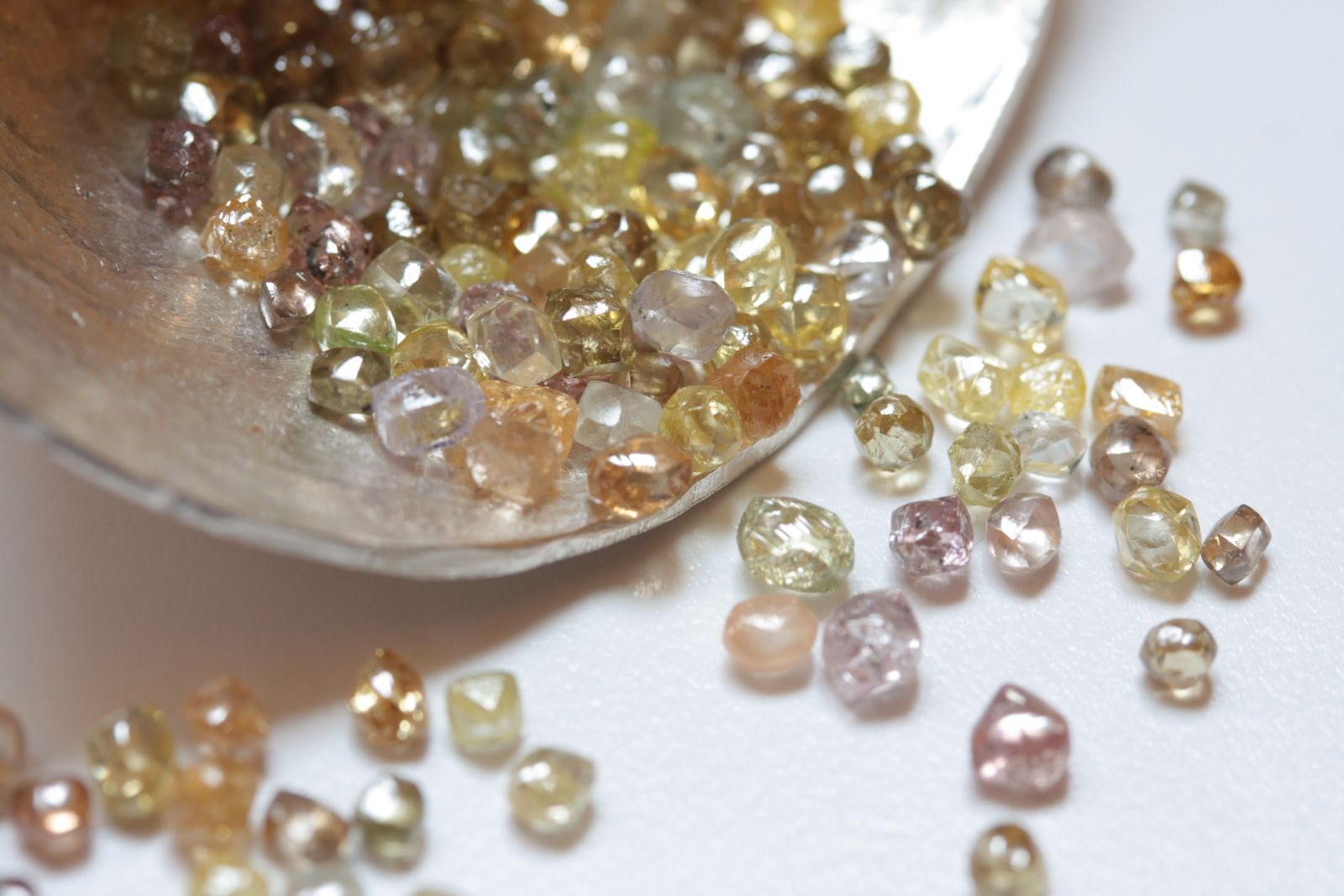
Diamonds are usually colourless, however sometimes there is a presence of one or more trace elements, these atoms aren't part of the diamonds essential chemistry, making up only 0.05 percent of its structure. These elements can change the colour of the diamond; the hues range from green and yellow, brown and pink, black to blue, and the rarest reds. They are available in a variety of tones from faint to vivid. The most expensive diamonds are those that glisten with intensity and are bright and colourful.
As we all know, nothing shines brighter than a diamond, flashing us with its extraordinary spark. Due to a high RI and relatively high dispersion, diamonds are very lustrous minerals. In fact, it is the only gemstone that has adamantine lustre, the spark that never fades.
Another unique characteristic is that all diamonds are excellent heat conductors, transferring heat better than silver which is the second best among other substances. Such characteristic is very useful in determination between diamonds and other stones.
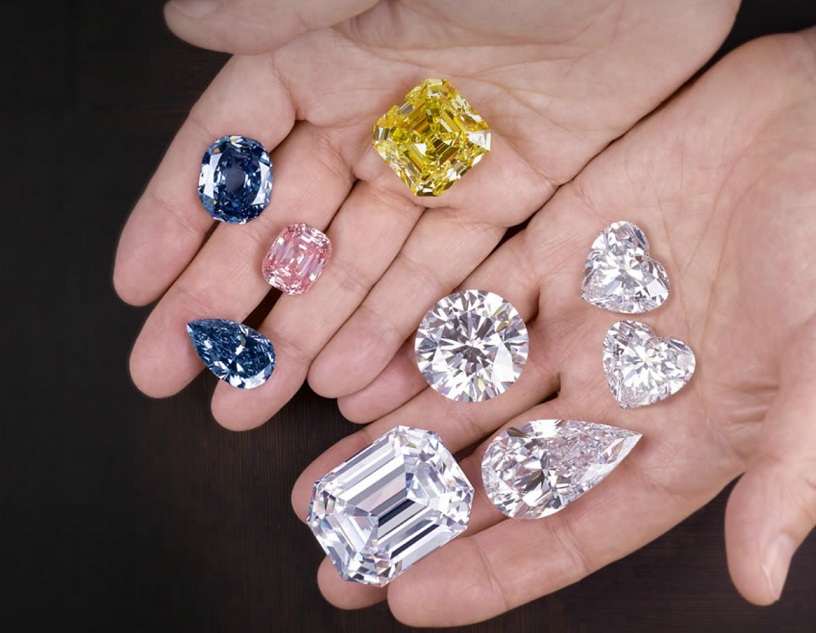
Graff Diamonds
Diamonds come in all sorts of sizes and polished into different cuts and styles, most popular being round brilliant. Few legendary gems like the Cullinan, Koh-i- Noor(mountain of light), the Eureka, Star of South Africa, the Hope, the Regent and some more surprised the world with their mesmerising beauty. The largest rough diamond ever found was the Cullinan, weighting 3,106ct. It was cut into nine major stones and 96 smaller stones, the largest piece was a 530.20ct pear-shaped diamond set in the Imperial Sceptre, which is kept in the British Crown Jewels in the Tower of London.
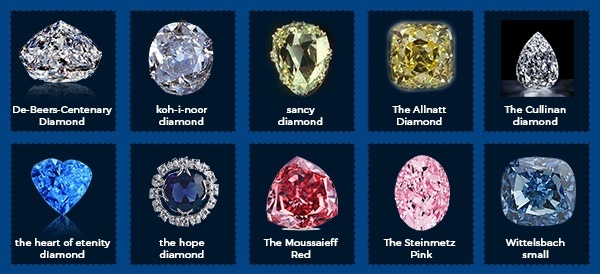
The other famous diamond that belongs to the British Crown Jewels made quite a lot of noise. The diamond was owned by the Indian Emperors who presented it to Queen Victoria in 1850. When the stone came from India, it weighed l986 carats; later it was recut to l05.60 carats oval, the longest of all diamonds. Originally the Queen wore the diamond in a brooch and later it was set in the State Crown, passed on and worn by all British Queens. Her Majesty the Queen Elizabeths dazzled with the famous diamond on her coronations in 1937.
Diamonds have a long history of folklore; inspiring rich, passionate myths of romance, intrigue, power, greed, and magic.
Some of which say diamonds were created when lightning thunderbolts struck rocks and others feel it posses healing powers. At the time of their discovery, diamonds were valued for their strength and brilliance, serving as perfect tools for cutting, engraving metal. Diamonds were worn as adornments, served as a talisman to ward off evil, and were also believed to provide protection in battle. In the Dark Ages, diamonds were also used as a medical aid and were thought to cure illness and heal wounds when ingested.
Nowadays, diamond is a symbol of eternal love, the every girl's dream.
Zhanna @ IGR London




